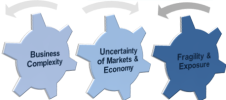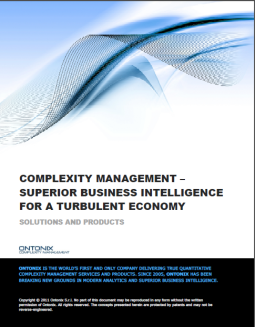Quantitative Complexity Management: A simple 5 step process
Friday, 28 June, 2013 1 Comment
There are plenty of self-anointed subject matter experts happy to pontificate upon complexity. Sources, causes and their own approach to solutions but what they all (except Ontonix) lack is the means to establish a sound (verifiable) quantitative basis from which to commence the process of ‘complexity management’, monitoring and maintenance.
Check it out, for FREE, on-line!:
 The following five-step process forms the backbone of all our service engagements. It reflects our extensive experience in Quantitative Complexity Management in a multitude of applications spanning a wide variety of industrial sectors. It also illustrates the typical structure and workflow in a business simplification and ‘robustification’ project.
The following five-step process forms the backbone of all our service engagements. It reflects our extensive experience in Quantitative Complexity Management in a multitude of applications spanning a wide variety of industrial sectors. It also illustrates the typical structure and workflow in a business simplification and ‘robustification’ project.
via Ontonix – Complex Systems Management, Business Risk Management.

















